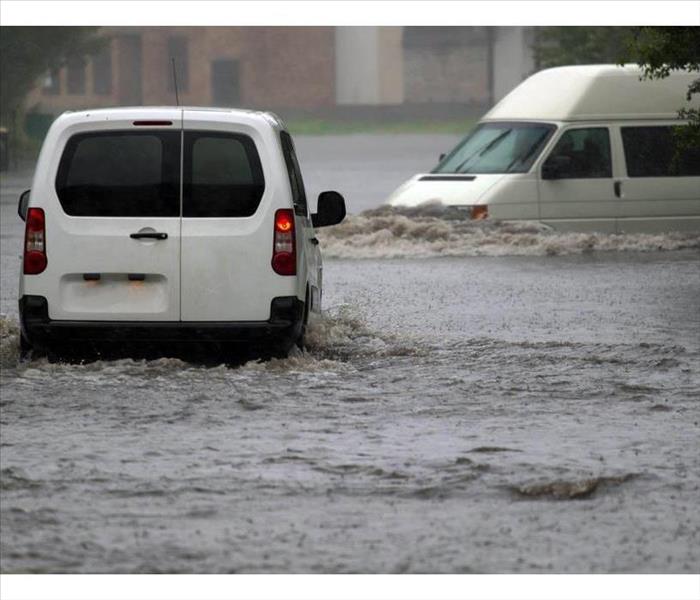Driving on a Flooded Street Can Be a Deadly Mistake
4/29/2020 (Permalink)
You’ve driven on the same patch of road hundreds of times; what’s a few inches of water? Flash floods are sudden, very dangerous, and can quickly overcome local drainage measures, causing a fully flooded street. Many drivers are tempted to just cross it quickly – and unfortunately, some will pay with their lives.
Very Little Water Is Needed for a Disaster
It doesn’t take much water to turn a flooded street into a death trap:
- 6 inches of flowing water can knock over an adult.
- 12 inches can whisk away a small car.
- As little as 18 inches can carry away an SUV or truck.
Also, flowing water can undermine a road and cause sections to crumble, which might not be detectable on flooded roads. It’s also often difficult to determine the depth of water as the water itself obscures your normal reference cues and can be quite disorienting.
Floods Are the Deadliest Natural Disaster
According to the National Institutes of Health, floods are “the main cause of death” from natural disasters, with most of those caused by flash floods. On average, 84 lives are lost to flooding each year, with around two thirds of those deaths in vehicles.
Turn Around, Don’t Drown
Probably the two most essential travel tips for safety are to wear your seatbelt and avoid flooded roads. As part of a national highway safety push, the National Weather Service initiated their Turn Around, Don’t Drown campaign to raise driver awareness of the dangers of driving on a flooded street.
Unfortunately, the numbers of flash flood deaths continue to rise in recent years, probably attributed to the increasing number of miles Americans drive overall. Flooding is also one of the leading causes of deaths in homes, including residences in Six Forks, NC. The best way to avoid this is to pay attention to evacuation orders and flood warnings for your area.
Once the floodwaters have subsided, you’ll need water damage restoration experts to inspect the home for structural soundness. Next, they can assess what needs replacement and what can be saved and then begin mold remediation efforts.

 24/7 Emergency Service
24/7 Emergency Service
